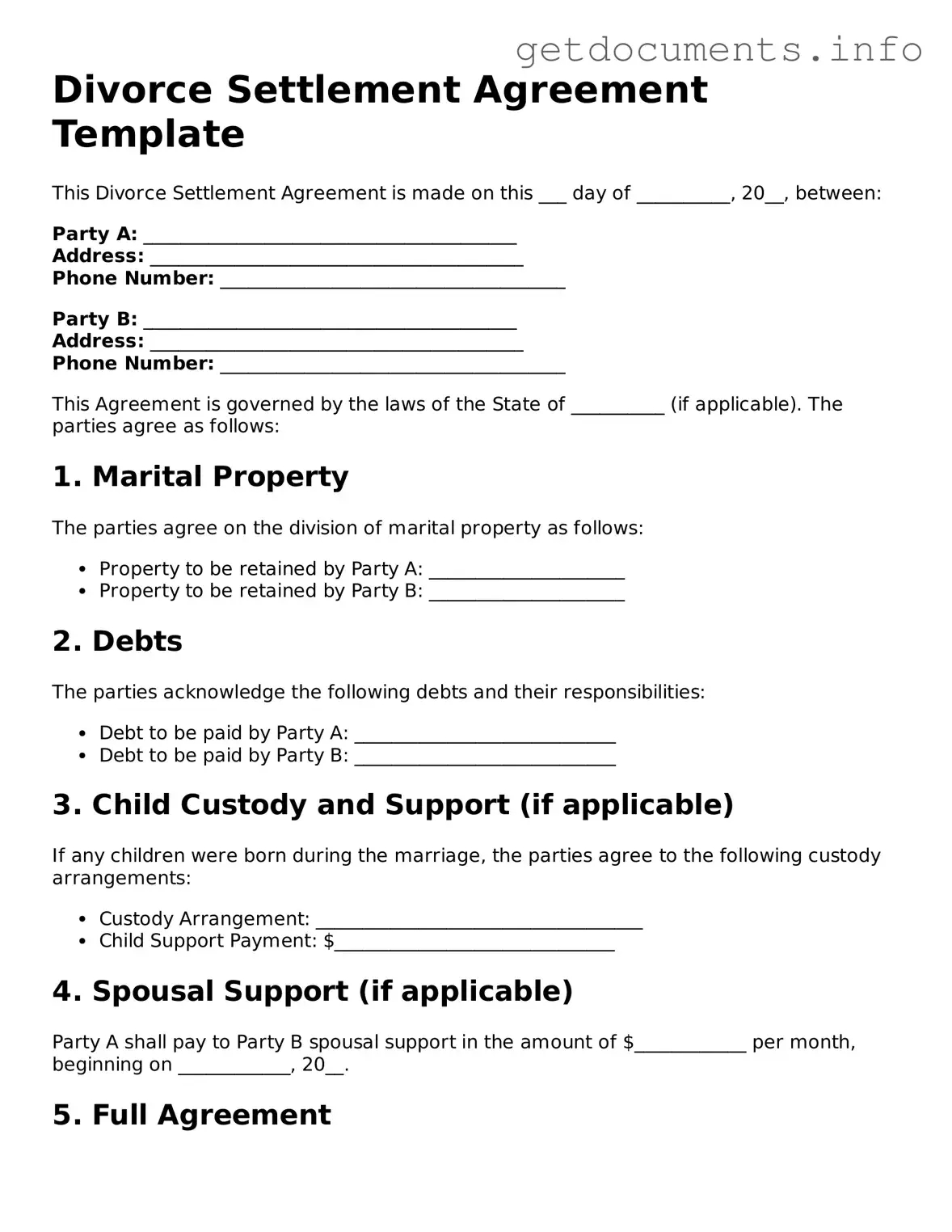Printable Divorce Settlement Agreement Document
A Divorce Settlement Agreement form is a legal document that outlines the terms and conditions agreed upon by both spouses during a divorce. This form typically covers important aspects such as asset division, child custody, and support obligations. Understanding how to properly complete this form is crucial for ensuring a smooth transition post-divorce.
Ready to get started? Fill out the form by clicking the button below.
Access Divorce Settlement Agreement Editor
